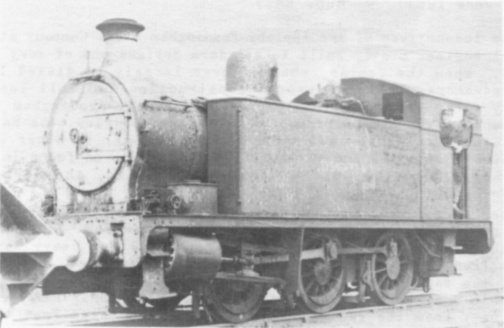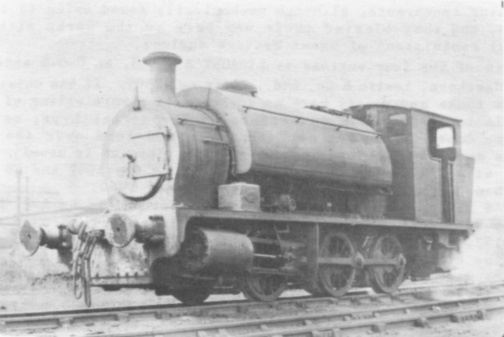
| THE INDUSTRIAL RAILWAY RECORD |
© DECEMBER 1963 |
INDUSTRIAL RAILWAYS
OF LINCOLNSHIRE
| (1) STEAM ON THE SLAG RUN |
by L. A. TEATHER |
(Since this article was written, many of Lysaght’s steam locomotives have been scrapped, among them No.3 (about April 1963), No.6 (May 1963) and No.8 (about June 1963). - Hon. Ed.)
The steam locomotives of the Appleby-Frodingham Steel Company at Scunthorpe were powerful engines mostly built to standard designs and of very substantia1 construction. When the Company changed over largely to diesel locomotives many of the steamers, being of recent construction and well looked after, found a ready sale. As is well known, former Appleby-Frodingham locomotives are to be found in the Northamptonshire ironstone quarries, the National Coal Board pits, other ironworks and, to a limited extent, in other branches of The United Steel Companies Ltd. A number are still to be found in Scunthorpe under the ownership of the Coleby Ironstone Co. Ltd. and John Lysaght’s Scunthorpe Works Ltd.
The latter firm purchased four engines in 1960 for heavy work hauling slag ladles over gradients some distance from the steelworks. (The majority of Lysaght’s other steam locomotives were rather small for heavy work.) These four engines frequently crossed a bridge over the Normanby Park road and were thus some of the easiest of Lysaght’s engines to study, the only other steam engines on this duty being the Hudswell Clarke side tanks MARY and FRANCES. The intense heat from the ladles soon blistered the paint from the front of the locomotives for they always worked cab-first so that the crews were as far from the hot slag as possible. The engines, therefore, presented a rather unprepossessing appearance, although mechanically sound owing to their robust construction, and they blasted their way back to the works with sharp and precise barks reminiscent of Great Western engines.
The doyen of the four engines is LYSAGHT’S No.3, an 0−6−0 side tank built in 1921 by Hawthorn, Leslie & Co. Ltd., their no.3505. It has outside cylinders and the side tanks apparently have no aperture to permit oiling of the motion. Actually this is easier than on engines of the normal type, as there is a recess in the tanks so that a man can stand and lean over the frames for oiling, thus avoiding leaning over the running plate as is usual. This engine was rebuilt at A−F’s Central Engineering Works in May 1957 and so was in good condition when purchased by Lysaght’s in November 1960.
LYSAGHT’S No.6 was acquired at the same time and is an A−F "New Standard 18−inch" 0−6−0 saddle tank built in 1937 by Robert Stephenson & Co. Ltd., their no.4157, and re built by A−F in June 1957. It is one of the earlier variety of the class with straight-sided cab and short smokebox. LYSAGHT’S No.8 (Robert Stephenson & Hawthorns Ltd. no.7021 of 1940) was purchased in December 1960. It is similar to No.6, but has been fitted with the later pattern of cab in which the upper sidesheets slope inwards. The fourth engine, LYSAGHT’S No.15 (RSH 7035 of 1940) was also acquired in December 1960. It has a straight-sided cab and thus resembles No.6.
When these engines went to Lysaght’s, the A−F raised numerals were removed from the bunker sides, and later the transfer lettering was painted out on the tank sides and replaced by LYSAGHT’S No.X. (LYSAGHT’S No.3 at least retained the A−F lettering for some months.) No.X is painted on the bunker sides of each engine, but the lined A−F green livery is still carried, although now in a sad state.
The position in April 1963 was that No.8 was laid aside - it is thought to have had a cracked frame when received from A−F. No.15 had just been completely overhauled and was said to be in fine fettle. No.6 still works the slag but new Sentinel diesels are also in regular use. The steam monopoly on this job has been broken.


LYSAGHT'S No.3 (Upper) and No.6